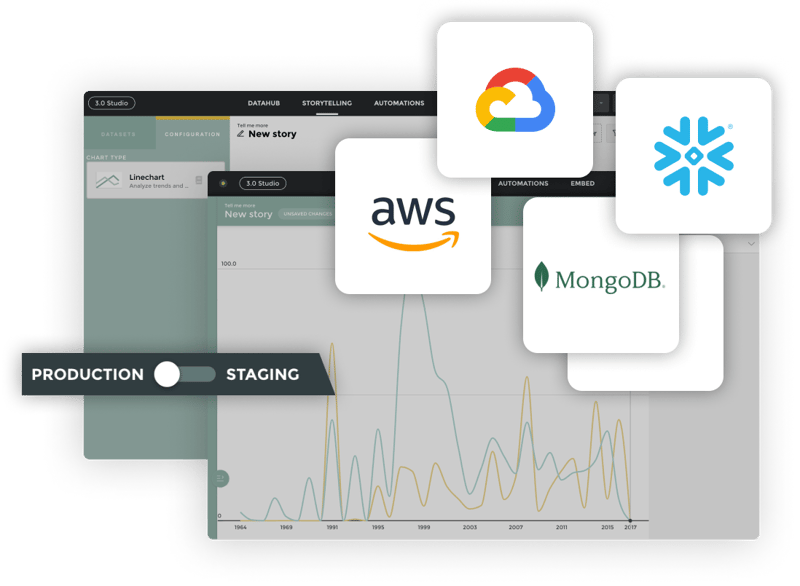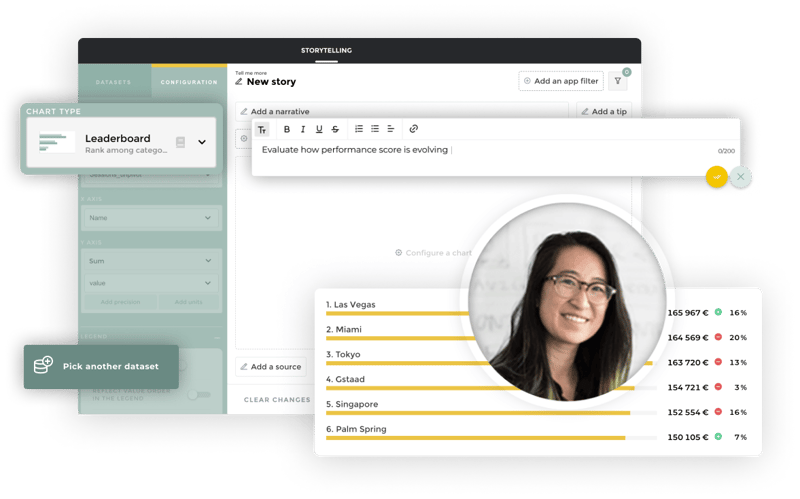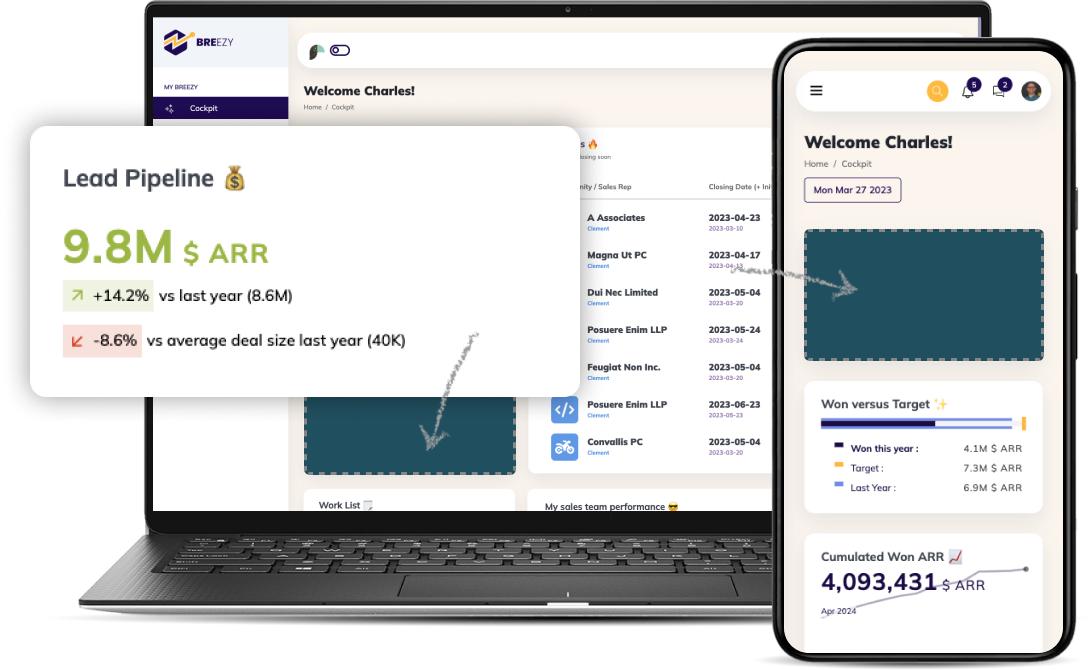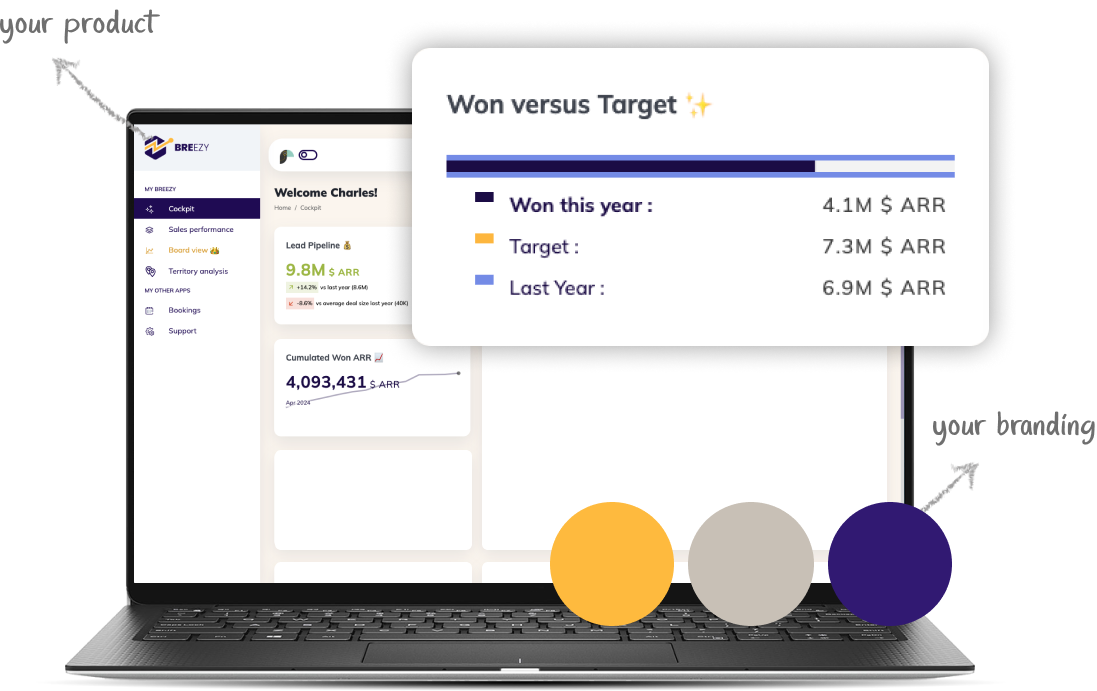Embedded analytics refers to a set of analytical tools that are seamlessly integrated into your existing product, so that the user perceives them as an inherent part of the product, even if they operate as a third-party analytical platform.
As long as analytics isn't your primary focus, relying on a strong partner is always a better option than being burdened with development and operations that are neither your expertise nor your primary focus.
You should consider the following factors when thinking of an analytical experience for your product:
- Seamless integration
- Emphasize scalability and onboarding
- Security and standards
- Pricing that is predictable
- Count on professionals for help
- Continuously test your embedded analytics
If your engineering and data teams do not have strong expertise in these areas, an embedded analytics platform may be the easiest option to cover these points. Let's examine what an embedded analytics solution should have, and what best practices should be followed.
seamless integration
Your ultimate goal should be to make analytics an integral part of your product. There should be no distinction between your product and analytics for your customers and users. In order to achieve this, the easiest way is to use an embedded analytics platform with a single service level agreement that can be white labeled. This leads to the question, “How do we get our data to the analytics platform? ” as well as “How do we integrate the UI seamlessly into our product and infrastructure?” The easiest way to understand your integration needs is by answering the following questions.
- What data sources do you have?
- Do you already have a data warehouse that is hosted on the cloud?
- Is it necessary to have integrated logins for your embedded analytics?
- What should the analytics user interface look like? Are there any specific styles, fonts, or colors we need to use?
- Is it necessary to control filtering and drilling within the analytics?

You will probably want to eliminate any visual or experience boundaries between your product and analytics, unless you are building a standalone analytical application.
Emphasize scalability and Onboarding
If your team only has a few static reports and a few consumers, they do not have to worry about how complicated writing queries can be. You should keep your time investments at a reasonable level when developing an analytics solution that you can rely on, with scalability for your users and insights integrated right at the point of work. Your teams' overall performance and productivity are adversely affected by reports that cannot be reused adequately.
With embedded analytics solutions that are made to scale, there is less risk of breaking your system if you make fewer changes, and the maintenance will be less complex. As your user base grows, your solution will become increasingly difficult to maintain if the embedded analytics solution is not scaleable.
Onboarding new clients can be a simple and straightforward process. Ensure that th embedded analytics solution has an onboarding guide, course or
security and standards
The use of data in a solution will require you to meet a variety of security and regulatory requirements. Over time, new regulatory standards are introduced for different regions or industries. Furthermore, you could consider entering a market requiring higher standards than you initially anticipated. It is possible that implementing such rules to an existing solution may negatively impact the roadmap of your core product features.

All these problems must be addressed by the ideal embedded analytics platform, as well as the highest level of data security and protection, to enhance trust, transparency, governance, risk management, and compliance for businesses of all sizes. All security aspects - cloud, physical, data, and operational - must be overseen and properly planned by solution owners. This is why at Toucan we don’t just focus on security for a particular region but instead have a global focus.
pricing that is predictable
Unless you are able to predict future costs transparently, your margins can be quickly wiped out if the calculations are incorrect. Generally, analytical platforms charge for their services in one of two ways, neither of which can be used to predict future costs:
- Pay per user: With this type of pricing, you will be required to charge for every user of every customer. Unless you are going to charge your customers for using analytics per user also, your costs will grow unpredictably (based on the current customer user base) and your margin calculations will become increasingly difficult - a nightmare for your CFO.
- Pay per customer workspace: allowing you to bring analytics to each of your customer’s end-users, predict price per customer and update your pricing accordingly. Depending on the number of workspaces, the amount of additional data storage required, and specific feature additions, pricing can be easily calculated.
Count on professionals for help
Your company may not have the necessary resources, capacity, or team to focus on implementing analytics instead of focusing on your core business regardless of how straightforward the implementation may appear.

In order to launch a successful analytical experience within your product, the perfect embedded analytics provider will provide you with the expertise of their Professional Services team. They can assist you during the entire lifecycle of data and analytics production, from conception to development, testing, launch and maintenance. Professional Services can assist you in three main ways:
- The initial implementation can be completed in weeks rather than months or years. The process of defining requirements might take longer if you lack analytical expertise in your team.
- Using the provider's business and technical expertise, you can define a path for your analytics projects to be successful.
- Develop data-driven partnerships that exceed your expectations by extending your team with dedicated experts.
No matter which approach you choose, you should be able to design, build, launch and improve your data projects with significant time to value, whether you seek guidance from others or entrust the provider to lead.
Providers should be able to assist you in moving up the analytics maturity curve by enhancing your existing data projects, providing world-class technical support, and providing comprehensive training programs.
Continuously Test your embedded analytics
Once your analytics system is up and running smoothly you will inevitably face the reality of day-to-day operations. This entails gaining a clear understanding of what is happening and striving to automate your operations as much as possible.
It is crucial to assess how your analytics are being utilized by your customers. This assessment will allow you to leverage the data for both quantitative and qualitative research, which can guide improvements to your products. Ultimately, the goal is to enhance user adoption and satisfaction, leading to a higher frequency of product usage.
In addition, automating routine administrator tasks is essential to minimize the risk of human errors and keep the associated operating costs of analytics as low as possible. By doing so, you can maximize profit margins. Now, let's delve into a closer examination of how we can tackle these challenges.
Product analytics over analytics
The analytics experience should include analytics in its own right to assist you not only in monitoring your environment but also in answering key questions such as:
- I have released a new dashboard. Can you tell me what the adoption rate is?
- Could you please let me know which of these are actually in use? What should I focus my attention on? Is there anything I can delete (impact analysis)?
- Is there a specific area of analytics that is highly utilized?
- Can you tell me what the overall trend of the product is?
- My workspaces are being refreshed frequently. Does it need to be done for all of them? What are the most commonly used ones?
With properly set up analytics you will get the answers and understand how your data feature works among your customers and users. You will see the patterns that might lead you to a change in your solution. You will also be able to prototype a new analytical function and study how it’s being used or find product champions, among your customers, that can help you with your user research.
Embedded analytics apps should be revisited periodically to ensure they deliver the intended value and can be adjusted as necessary. It is likely that embedded analytics will be driven by data teams, but if you pick the right embedded solution it shouldn't be. This is why Toucan is a no-code platform. The process is an iterative one that requires collaboration and alignment across the organization
Embedded analytics should be used by different teams in order to constantly assess the contributions being made. It is important to review use cases and required metrics regularly in order to determine whether the efforts are delivering value and whether any modifications need to be made in order to measure progress. By doing so, you are able to resolve any issues as they arise and ensure that all users are receiving real value from the embedded analytics platform.







